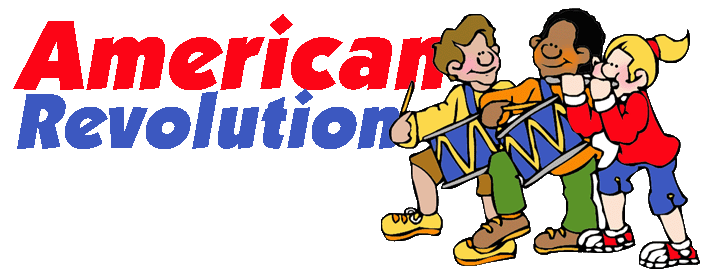For Teachers
Lesson 8: The turning point: Trenton, Valley Forge, Saratoga
Vocabulary:
Deserter
Enlistment
Hessians
The War was not going well for the colonists. Washington and his poorly trained men lost battle after battle. The British captured New York (the largest city in the colonies) and then Philadelphia (where the Continental Congress had its headquarters.) It looked terrible for the colonies. Washington's army was going home. Many deserted, and others had their enlistments end so they too went home. Washington himself said "I think the game is pretty near up". But Washington wasn't a quitter. He had an idea. Thanks to spies, Washington knew that about 1500 Hessian troops were staying in the town of Trenton, New Jersey. The Hessians felt safe and secure with the partly frozen Delaware River between them and the colonial army. So on December 25th (Christmas Day) the Hessian troops celebrated with a church service then relaxed and went to bed. Contrary to popular belief, they did not drink and feast.
On the night of Dec 25, 1776, General Washington led his army across the Delaware River. There is a very famous picture painted about this crossing. It is shown below.
Document analysis: Have students look at the picture and see if they can spot details that show this is not a realistic painting. Or have students look at the painting and see how it might have been used to inspire Americans. (Those same details make this great propaganda.)
NEXT, Find a picture of Washington Crossing the Delaware by Emanuel Leutze painted in 1851, or use this one: This image of the painting is from the National Archives and is in the Public Domain.
Detail #1: Sunlight in the background. Washington crossed the river in the middle of the night.
Detail #2: Washington is standing up in a very small crowded boat. Anyone who has ever been in a small boat knows the other guys would have been yelling at him to sit down and not rock the boat.
Detail #3: The Flag is an American Flag. We were still 13 colonies and this flag was not in use.
Once across the river Washington and his Army had to march 13 miles to Trenton. When they got there it was almost daylight so Washington ordered the attack to take place immediately. The Hessians were woken up by the sound of gunfire and rushed to get dressed and get ready to fight. It was too late. The Colonial Army was already in Trenton setting up cannons to cover the street. The Hessians tried to fight but were unable to do so. After a short but fierce battle, the Hessians surrendered to General Washington. The Colonists lost two dead and 5 wounded while the Hessians lost 22 dead, 86 wounded and almost 900 taken prisoner. What a great Victory for the Colonies. Morale soared, men enlisted or reenlisted, the revolution was able to continue.
Next, Valley Forge.
The Continental Army under George Washington had fought the British Army throughout 1777 but had lost almost every battle. With little real training and no standards the Army was not cohesive. The British captured Philadelphia and the Congress had to scatter and flee for their lives. Winter was coming and Washington was looking for a place to camp his army for the winter. He chose Valley Forge.
Show students this painting of Washington at Valley Forge. George Washington and Lafayette at Valley Forge. Painting by John Ward Dunsmore, published 1907.
Have your students complete a document analysis of this painting. How does it show the hardships of Valley Forge?
Detail 1: Snow falling and on the ground
Detail 2: The standing soldier has no shoes or gloves
Detail 3: The men are hovering around a fire with one man hauling a load of firewood for that fire.
Detail 4: The small shacks in the background are where the soldiers lived.
With all this going on, why do you think most of George Washington's army stayed?
The winter at Valley Forge allowed the colonists to train an army that could stand up and fight the British Army. The colonists were now ready.

